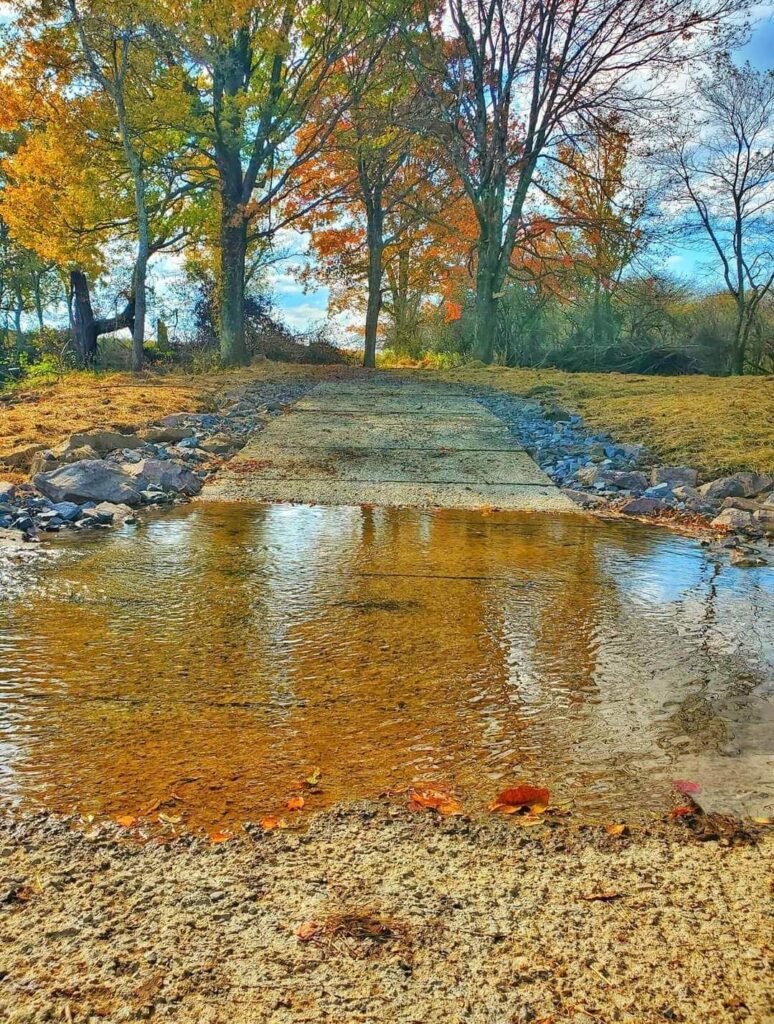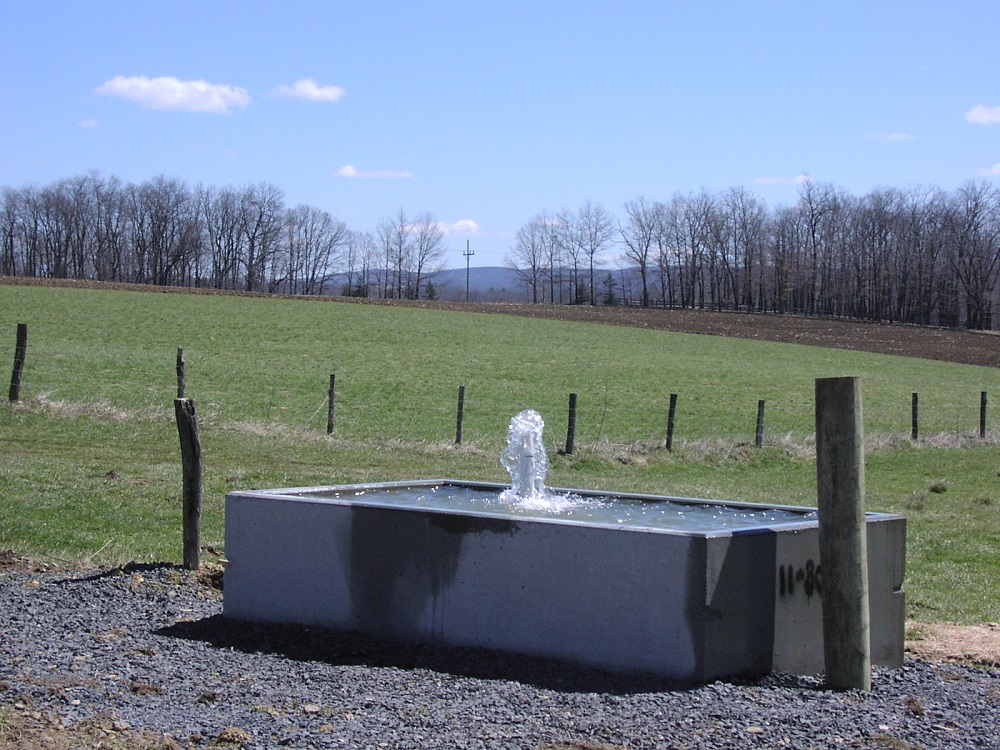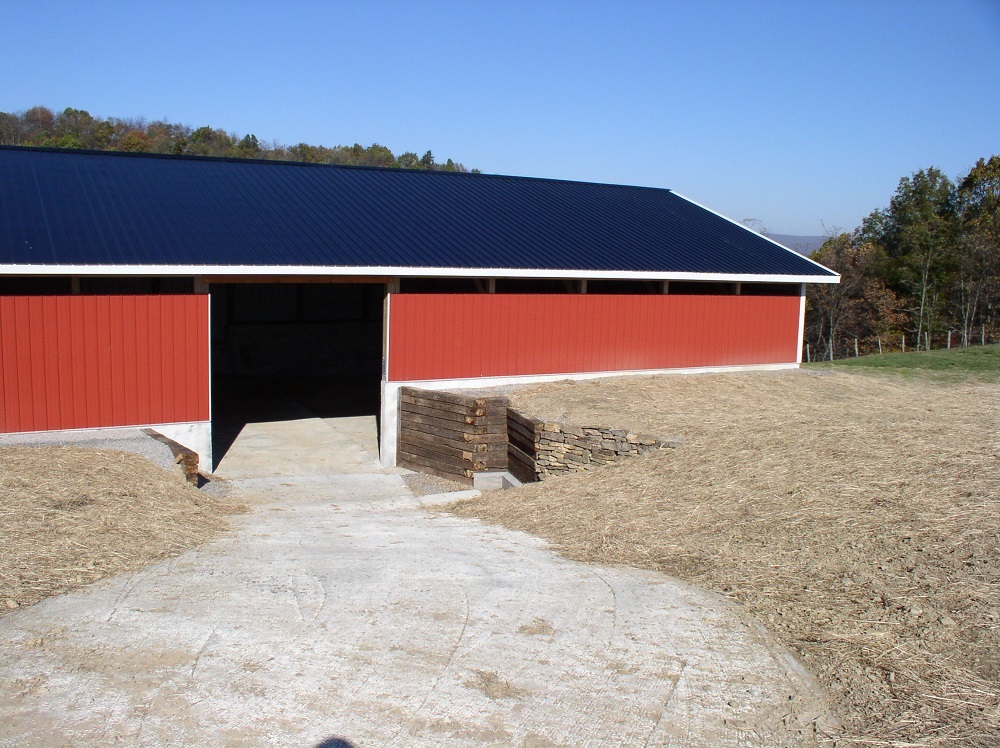What to Expect
If you have never worked with the Garrett Soil Conservation District, you may be wondering how everything works or what to expect if you come to our office for something other than equipment rentals.
Conservation Plan
The most important thing that we do for farmers and landowners is to help them understand what things they can do on their farm to protect their soil and water. As most farmers know, the soil and water on the land are its most valuable assets. Protecting it is important for retaining the value and usefulness of the property.
We do this by creating a Conservation Plan. A Conservation Plan looks at every part of the farm and details what the landowner or farmer can do to improve their property for better conservation. The plan will contain maps, and suggestions for practices and structures that can help with conservation.
It is important to understand that we are not a regulatory agency. We never require landowners and farmers to do the practices or build the structures we suggest. And we don’t “turn anyone in” to any regulating body. We are simply providing information that the landowner or farmer can use to make decisions for their land.
To make the plan, our staff comes out to the farm, and asks questions of the landowner or farmer. They also will look at the property, and they may do some things like take measurements if there is a need. There is no charge for a Conservation Plan.
Conservation Plans are detailed, and they take time to prepare. So, there is a waiting list. If you think you are interested, it is recommended that you ask to be included on the list.

Funding
Many times, people come to our office for funding. We help farmers and landowners obtain funding if they qualify and it is available. But that funding ties into the Conservation Plan. Once we write a Conservation Plan, that plan will list practices that the farmer or landowner can implement, and structures that can be placed on the property, to improve the soil and water. Funding helps farmers and landowners to make those improvements at less cost. So, the first step is the Conservation Plan. We can’t help with funding until there is a Conservation Plan to tell us what your property needs.
The ultimate goal of the District and of most farmers and landowners is to be able to fix every problem area on the land. But that may not always be feasible, and it may take many years. Individuals are not required to do everything in the plan. It is guideline of things to work toward at the farmer’s or landowner’s pace. Our staff will tell you what structures and practices will help improve your land, and they will tell you what funding might be available to help. But you would need to start the process of putting any of these practices that you want to do into effect by either doing them yourself or asking us to help you apply for funding.
Our office works with both MDA and NRCS funding. Not every property qualifies for financial assistance. But our staff are experts in what funding is available. So, we can give you advice and help you apply for the funding, for which you qualify, that may be obtainable.
Below is a brief outline of the types of funding:
MACS
- MDA Program
- Requires farms to have at least 8 animal units (8000 lbs of animal weight) to qualify for regular programs
- Offers cost-share funding
- Offers a small farm cover crop program that does not have the animal weight requirement. Electrical and water installation grants to come for small farms.
- Anyone who qualifies can receive funding
- Yearly sign-ups for Cover Crop and Manure Transport funding
EQUP & TEAMS
- NRCS Program
- Competitive – Applications are ranked based on the best use of funds, so not everyone is funded
- Does not require the property to have animals
- May take several years for funding, and you may not be funded at all because projects are ranked according to the most environmental impact
- Offers cost-share funding
- Golden Warbler Forest Restoration Funding Available
- Extra funding is available for this program this year. Application is encouraged.
CREP
- FSA Program
- Requires farms to have at least 8 animal units (8000 lbs of animal weight) to qualify
- Property must be within a specified amount of distance from a water source, such as a stream or river
- Offers cost-share funding
- Anyone who qualifies can receive funding
- Offers a program in which the state will pay rental payments to keep land out of production for a certain number of years.
Understanding Grant Funding
Grant funding is money that either the State or Federal government gives to someone to do something specific. Individuals do not have to pay it back. There isn’t anything to fear from grant funding. The government doesn’t put a lean on your property, and the government cannot take your property because you accepted funding. They offer the money to do the projects because ultimately the conservation done on your property protects the water in the community and beyond.
Grant funding from the State or Federal government is public money. People pay taxes, and those taxes are divided by the government to do various things that benefit communities. One of those benefits is healthy soil and clean water for everyone, and these grant funds help to make that happen. The thing about erosion and contamination of water is that it doesn’t stay on your land. If you allow your soil to erode, it travels off of your land to the rest of the community and downstream to other communities. You may not realize it, but you could be losing part of your property in the form of your topsoil every year.
We sometimes hear comments from individuals who have heard that someone accepted funding and now they can’t use their property the way they want to use it. Generally, those comments are with regard to MALPF, or “Land Preservation”. With MALPF individuals sell the development rights of their property to the government, which means it has to stay in agriculture. Most of the time farmers choose to put their land in MALPF to prevent it from ever being developed. So, often the unrest about MALPF comes from developers who can’t purchase the land to subdivide it. Regardless of how they start, these types of rumors sometimes scare individuals away from funding.
We do not deal with MALPF in our office. We do have CREP which pays landowners rental payments to keep the land out of production for a certain period of time. It’s like renting your land to the government for so many years. But most of the funding we deal with doesn’t restrict the use of your land in any way.
That said, if the government pays to build a structure for you, they may have certain rules about how you can use it. But those rules are detailed before you agree to anything, and they are very reasonable. The only purpose of those rules is to make sure the structure is used for the conservation purpose intended. (For example. If EQIP pays for a high tunnel for you, they would want you to plant your plants in the ground and not in pots. This is because the tunnel is replacing a field plot because high tunnels reduce erosion. And if MACS builds you a manure storage structure, they expect you to use it to store manure, not your farm equipment.)

An Example of How It All Works
Here’s an example. We’ll call our pretend farmer David. David comes to our office because he has heard that our office paid for a fence for his neighbor’s cows.
First, we will make a Conservation Plan for David. We determine that David has five things that need addressed on his farm. He needs a fence, a waste storage structure, a livestock watering trough, a spring, and piping from the well to the trough.
We suggest MACS funding because he has 15 head of cattle. David can’t afford to do everything on the list because there is a cost-share whereby he will need to pay 20% of the costs, so he decides he’d rather do the watering trough, spring, and piping right now. He may be able to do the others later on.
David decides he does want to apply for MACS, so our office applies on his behalf.
Our office obtains funding for David to help cover the costs of construction. And our staff works with David throughout the planning and construction of the projects.
A year later, David has a new concrete cattle trough in his field and a spring to feed it. And it cost David only 20% of what it would have cost if he had done it himself. So, what’s the catch? There isn’t one. David originally watered his cows with a stream on his property, which means the soil from his stream bed and stream edges was eroding downstream, along with all those cow feces. Now the water is cleaner both on David’s farm and beyond. The community down stream is happy, and David rejoices that he won’t be loosing 5% of his stream soil per year. Plus, the fish in his stream are a lot happier and taste a little less like cow pooh.
This is a simple example. Sometimes we recommend that farmers obtain funding from several of the sources for different needs. And some projects really can’t be completed in a year. Other times, farmers choose to spend many years working with our office to build a host of structures on their farms, a few at a time, as they have cost-share funds to spend. In this case, a farmer may come back to our office requesting help with different things listed on the Conservation Plan multiple times over many years.
Important Things to Know
You'll Need Patience
The saying is that “Rome wasn’t built in a day”. And neither will be your roofed cattle structure. The Conservation Plan, and then planning for various practices for which a farmer or landowner requests funding, is very tedious and time consuming.
Additionally, many farmers and landowners request our help. There is a waiting list, and it may be a while before you receive your Conservation Plan or can be considered for funding.

There are Set Procedures for Practices
Each of the funding programs have certain requirements for how structures need to be built if they are going to help you pay for them. Our office staff is experienced in those guidelines. That’s why we suggest the things we put into our plans. For example, you may be able to get water from your well in a cheaper fashion than our plan specifies. But is the pipe you are using going to be still functional for your project 20 years from now? The specifications that the programs make are there for a reason. They want your structure to do the job and to last for many years. So, yes, you could just run a hose on top of the ground from your well to your cattle trough, but we’ll tell you that if you want help paying for it, you’ll need a pipe that runs underground.